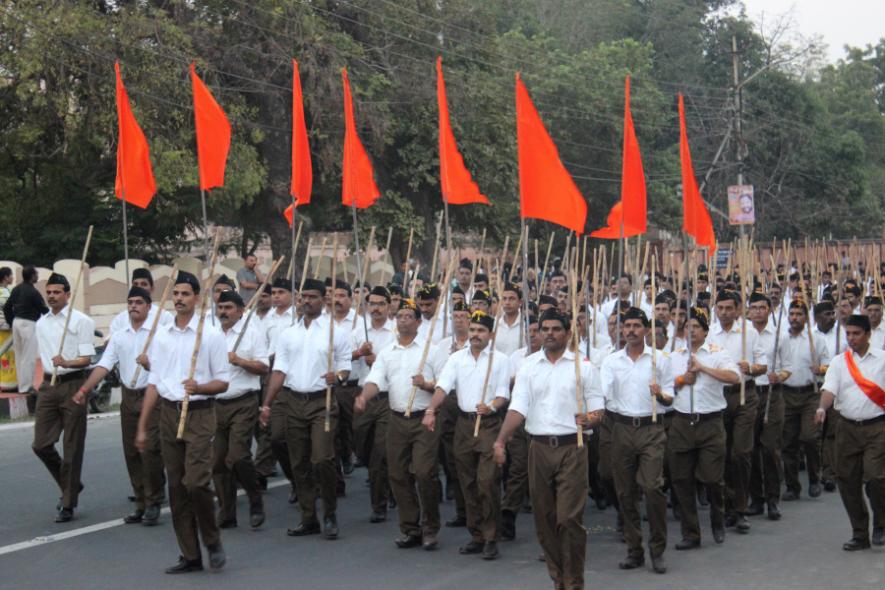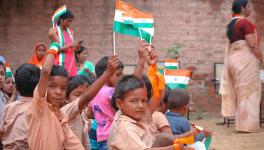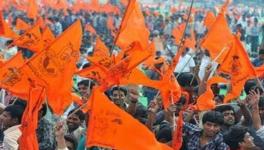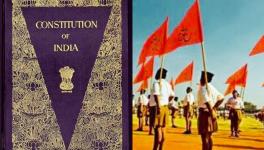New RSS Experiment: Mountaineer Santosh Yadav at Annual Dussehra Programme

Representational image. | Image courtesy: Wikimedia Commons
The Rashtriya Swayamsevak Sangh (RSS) has invited famous mountaineer Santosh Yadav as the chief guest for its annual Dussehra programme. This is the first time in its 97 years that the RSS has invited a woman to its programme. The Dussehra programme of the RSS is not only to provide the country with a “special” message but part of a strategy to influence ongoing debates in the country or divert the discourse to suit its beliefs.
The RSS has invited so-called non-political people (actually, non-political people are usually right-wingers) from different regions to its headquarters in Nagpur on Vijayadashami day as chief guests. In 2018, the Sangh had invited former president Pranab Mukherjee to the same event, which his daughter Sharmistha Mukherjee had opposed. In the last few years, the Sangh has invited personalities like Nobel laureate Kailash Satyarthi, former DRDO director-general Vijay Saraswat, and HCL chief Shiv Nadar, as chief guests to its Dussehra programme.
Although the RSS has repeatedly insisted it is a non-political cultural organisation that does not directly interfere in politics, even Sanghis do not believe this. The Sangh has always directly controlled any Bharatiya Janata Party (BJP) government. And especially in the last eight years, not only the government of India, even BJP-led state governments have taken decisions that bear the Sangh’s imprint.
Over a decade after it was established in 1925, in 1936, the RSS launched its women’s wing, “Rashtra Sevika Samiti”. There is also an organisational structure for women, which runs annual programs under the Sangh Shiksha Varg banner, and the women’s wing also has full-time campaigners. But office-bearers in the organisation are the female relatives of the office-holders and volunteers of the RSS and Sevika Sangh.
No woman office-bearer has a public image like many non-RSS women who lead a social life have. Not only this, unlike the male figures of the Sangh, there is no talk of any female office-bearer from the RSS fold. Therefore, the question arises, why is a Brahmanical organisation like RSS not inviting any Brahmin or Savarna woman almost a hundred years after it was established? Why is a Yadav woman coming to its annual event when thousands of elite-caste women could have been invited instead, who have made a mark in public life in India and the world?
The second question is, what message will mountaineer Santosh Yadav give from Nagpur to an Indian society trapped in economic and social crisis, which will provide a sense of relief to a nation in troubled times? According to a Sangh insider, before the 2019 Lok Sabha election, the Sangh had conducted a caste survey across the country. In that survey, the share of the Yadav population in the country was found to be close to 9%. Whereas in Bihar and Uttar Pradesh, the Yadav population is more than 15%, the community is numerically significant in Jharkhand, Rajasthan, Haryana, Madhya Pradesh, Chhattisgarh and West Bengal, even in the capital Delhi, where the BJP has been a ruling party. The BJP-RSS believe that if even a third of the Yadavs leave their traditional leadership and join it, the social fabric can be even more significantly changed than already.
The BJP has continuously altered its blueprint based on circumstances. It mobilised the Dalits in Uttar Pradesh by re-interpreting Dalit heroes around Hindutva themes. Sociologist Badri Narayan Tiwari, who was earlier Hindutva-leaning, and openly favours Hindutva since the BJP came to power, has elaborated this strategy in his book, ‘Hindutva Ka Mohini Mantra’. According to him, the BJP projected the symbols of Dalits as the heroes of Hindutva.
Since India has historically been cruel to the oppressed, members of all castes try to keep themselves on par with the Brahmins. For this reason, Dalit symbols and icons started being re-incarnated as Hindutva heroes who opposed the Muslims and the non-elite castes. This was a significant victory for the Hindutva laboratory.
Based on such experiences, the RSS wants to send a message to the Yadavs—not the nation and society—by inviting Santosh Yadav to its platform.
The Sangh wants to signal the Yadavs at its annual event that they are highly valued. Using this strategy, for the first time, in 2017, the RSS invited Dadasaheb Ramkrishna Suryabhan Gavai, a member of the Republican Party of India, who is also a Dalit, to its Dussehra programme. Similarly, in 2019, another Dalit, Sant Nirmal Das from Punjab, was invited to the Vijayadashami event. Elections to the Maharashtra and Punjab Assemblies were held within two years of the invitations to Gavai and Das.
Two large states of the Hindi belt, Bihar (from which Jharkhand was carved out) and Uttar Pradesh, can be taken as examples. In the politics that started after the Mandal commission, the leadership of the Yadavs in Bihar-Jharkhand came into the hands of Lalu Prasad Yadav, former chief minister of Bihar, and Mulayam Singh Yadav, former chief minister of Uttar Pradesh.
These two politicians prepared a massive political front that directly opposed the RSS-BJP and readied a mass base for a political equation whose ideas were firmly contrary to those the Sangh espouses. Lalu and Mulayam could do this because they were chief ministers who wielded significant political authority and had a mass base. All this time, the Sangh-BJP tried to create a Hindutva-based equation that could suck their mass base from under their feet.
For this reason, these two leaders erected a social barricade that prioritised protecting the interests of Muslims and other minorities. Secondly, the idea of Hindutva is not only against the Muslims but also against the Dalits and socially backward sections. Since the Yadavs had gained access to leadership positions in Uttar Pradesh in Bihar, they not only refused to ride the chariot of Hindutva but also stood against its ideas. If the Sangh-BJP constantly faces obstacles in realising its vision of a Hindu Rashtra, it is because of these political developments.
In the last two Lok Sabha elections held on the 134 seats that comprise Bihar, Uttar Pradesh and Jharkhand, the BJP may be winning the most seats but has failed to break the social fabric in the way it desires. In any case, the Sangh-BJP has endeavoured to get the Yadavs to join them, for they believe it will make the dream of a Hindu Rashtra easier to fulfil. That is why the BJP constantly tries to woo this section—if not as a whole, then a large section to stop supporting the Samajwadi Party and the Rashtriya Janata Dal and move towards the BJP.
To implement this strategy, Bhupendra Yadav was made the in-charge of Bihar, first by giving him a position in the central organisation and then, after a long time, making him a minister at the Centre. Similarly, the BJP has included Sudha Yadav of Haryana in its new parliamentary board. This year, Sangeeta Yadav was sent to the Rajya Sabha from Uttar Pradesh, and now Santosh Yadav—who is seen as an icon in Yadav society—has been invited as chief guest to an important meeting. Santosh Yadav is a two-time Everest climber whose name features in the Guinness Book of World Records. The government of India honoured her with the Padma Shri in 2000. Note also that all three—Sudha, Santosh and Sangeeta—are women.
The Sangh-BJP feel that if it breaks even a section of Yadav women away from their traditional parties, it will help realise the dream of Hindu Rashtra.
The author is an independent writer. The views are personal.
Get the latest reports & analysis with people's perspective on Protests, movements & deep analytical videos, discussions of the current affairs in your Telegram app. Subscribe to NewsClick's Telegram channel & get Real-Time updates on stories, as they get published on our website.
























